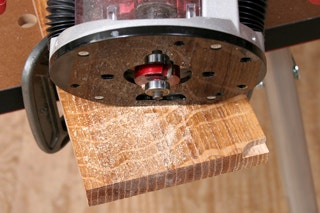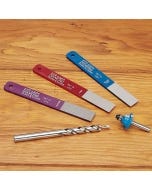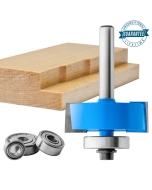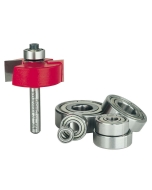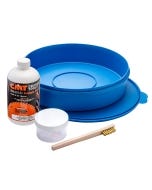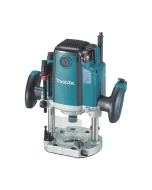Solutions for Routed Rabbet Tearout?
I have a question on routing tearouts. I can't figure out what's happening whenever I do picture frames. I don't go more than 1/8-inch when cutting rabbets, sometimes less, and no matter what I do, I get nasty splinter tearouts. I rabbet both sides, with bad results going with and against the grain. Whether I use my Dremel, router table or my palm router, I get tearouts. - Amy Nielsen
Chris Marshall: If the tearout is happening on the face of the stock receiving the rabbet cut, my first hunch is that your rabbeting bit could be dull or dirty. Clean the cutting edges and see if that improves your results. Next, try slowing down your feed rate — pushing too hard can lead to tearout. If, on the other hand, the tearout is happening when the bit exits the cut (edge grain), that's pretty normal for many router cuts. You could make a short climb cut first on the "exit" end of the workpiece, which will remove those fibers prior to making the usual pass to remove the rest of the waste. Or, hold a scrap piece in front of the exit edge to support those fragile fibers and rout right into that scrap when you complete the cut. It'll act like a backup board.
Tim Inman: Your problem is almost certainly related to the basics. Let's review them. First, as my grandkids would tell me at the dinner table, "No Horking your food, Grandpa!" Take small bites. You say you only go an eighth of an inch before trouble steps in. Is this 1/8 deep? 1/8 along the cut? 1/8 across the entire width of the rabbet? 'No Horking!' I usually cut the full depth, but take multiple passes to cut to the full width. Try different cutting techniques, but remember, 'No Horking!' I do it my way simply because it is easier for me to set up.
The next basic would be cutting speed. This means both the router travel speed along the length of the wood, but also the rpm of the bit. Too slow, and you have troubles; too fast, and you have troubles, too. Try different feed and rpm speeds if you have a variable speed router. Are the router bearings in good shape? A bad bearing on the collet end will allow vibration and 'chatter' that can cause cutting troubles like you describe. You shouldn't be able to 'wiggle' the collet. (Unplug and turn off before you test this!) Borrow a friend's router and try the cut with it if you think you might have a bearing issue.
Finally, I think we need to consider sharpness of the cutter itself. Is it sharp? Do you get the same problem with other bits, or just one? If you haven't tried other bits, then I'd do that right away. Borrow your friend's router and a bit, too. Unfortunately, not all router bits are the same. Even though they may look and feel sharp - or be 'brand-new,' the angles and edges are variable, and you might have a 'dull' bit. Test and compare. Sometimes the carbide on one side is way out of place relative to the carbide on another plane.
With a little testing and observation - trial and error work - you can solve this problem. If I had to bet, it is the bit itself.
Keep the inspiration coming!
Subscribe to our newsletter for more woodworking tips and tricks
